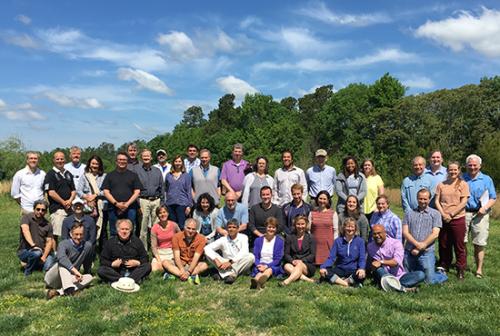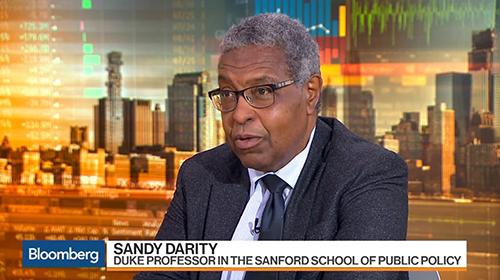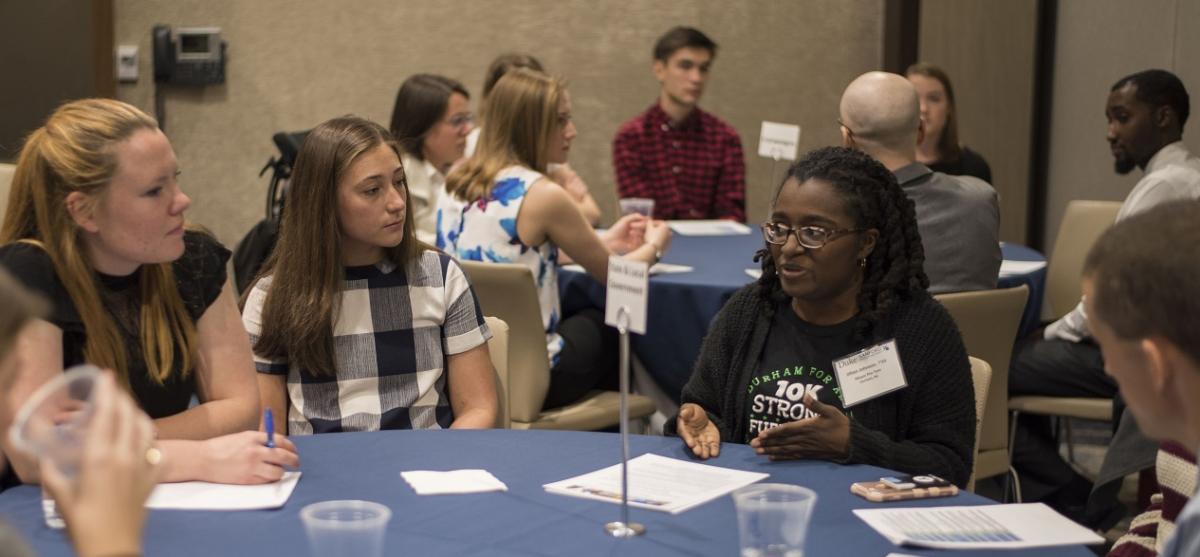

The Duke University Sanford School of Public Policy is 10 years old!
Happy Birthday, Sanford.
“Wait … Didn’t public policy get started at Duke University in 1971?”
Yes. And in 2022, we plan to celebrate the 50th anniversary of public policy at Duke.
“So … 10 years old … what’s that about?”
Sanford became a school on July 1, 2009, so we're marking the 10th anniversary as a school. Before, Sanford was organized as an interdisciplinary institute.
Becoming a school raised Sanford’s profile and helped spark exciting changes and growth.
To celebrate, we’re sharing a series of stories about the school. Here’s story Number 1.
1. A Changing of the Guard

Sanford nearly doubled the size of its core faculty, from 37 to 68 over the last decade. Along with 35 faculty who have secondary appointments in public policy and more than 70 adjuncts and visiting professors, the school’s teaching and research capacity were transformed.
Meanwhile, the first generation of esteemed Sanford School faculty members began to retire, and the school gained its first emeritus faculty members, including Philip Cook, Sherman James, Bruce Kuniholm and Helen “Sunny” Ladd.
2. Teaching: Flipped, Online, Abroad
Sanford professors experimented with new technology and teaching methods and launched several programs. There were flipped classrooms and online short courses such as “Civic Engagement in American Democracy,” created by Bruce Jentleson and Nick Carnes. More than 3,400 people have enrolled in David Schanzer’s online MOOC course on “Understanding 9/11.” Study away programs were added, including the Duke in DC Program in 2013, led by Kristin Goss, and Anirudh Krishna’s Program for Future International Development Leaders in India (2014).
3. A New Spin on Politics
The Center for Political Leadership, Innovation and Service (POLIS) started in 2015 to inspire a new generation of political leaders and engaged citizens.
After a host of high-profile events and activities under founding director Fritz Mayer, POLIS is now led by Director Mac McCorkle and Director of Research Deondra Rose. POLIS had a key role in Duke setting a record (10,003 voters) for on-campus early voting in 2018 and is mobilizing for the next election season.
4. Growing National Security, Military Ties
Now welcoming its seventh cohort, the Fellowship in Counterterrorism and Public Policy brings mid-career military officers and national security officials to Sanford for coursework and original research. Adding to the school’s growing reputation as a center for security and foreign policy studies are the Triangle Center on Terrorism and Homeland Security and the Triangle Institute for Security Studies, and the Duke Program in American Grand Strategy.
Featured Video
Military leaders, students benefit from Duke Counterterrorism Fellowship
5. Food Policy, Local to Global
The school branched into a new area of research and engagement with the creation of the World Food Policy Center. Led by Professor Kelly Brownell, the center works at the intersection of food policy issues including food insecurity; obesity and chronic disease; agriculture and environment; and food safety and defense.
6. Social, Digital, Podcasts
Sanford’s Facebook page, launched in 2009, was the first of the school’s social media channels, which expanded in the last decade to include Twitter, LinkedIn, Flickr, YouTube, and Instagram. Sanford also launched two podcasts in 2015 to showcase faculty research – the award-winning, narrative-style Ways and Means show, and Policy 360, an interview show with 95 episodes to date.
7. Diversity and Inclusion
To ensure the school is welcoming to all, a group of faculty, staff and students pitched in to create the volunteer Committee on Diversity and Inclusion. The CDI’s three-pronged effort has examined and changed the school’s structure and environment, recommended curriculum revisions and spurred changes in faculty recruitment. The school hired its first Diversity and Inclusion Fellow to lead the ongoing effort.
8. News Ways to Engage Alumni
“Imagine spending a weekend back at your old college campus with your favorite professor and 40 of his most inspiring students. What kind of ideas could you generate?”
Featured Video
Alumni Are Invited: Spend 36 Hours@Duke!
With this question in mind, Professor Tony Brown launched “36 Hours at Duke,” a popular program among a raft of new touchpoints with alumni. Sanford also launched an annual fund, which exceeded $1 million in donations for the first time this year. The annual fund provides critical funding for student internships and scholarships, as well as discretionary dollars.

9. Research with Impact
The decade was filled with interdisciplinary research projects, continuing the school’s long tradition of policy-relevant work. A few examples: Professor William Sandy Darity’s strategies for addressing the racial wealth gap rose to the top levels of public policy discussion and landed him on national TV. Ken Dodge’s research-based nurse home-visiting program, Durham Connects, grew into Family Connects International. The multinational Energy Access Project seeks to aid the third of humanity that lacks reliable electricity. And, through partnerships with information giants like Google and Facebook, the DeWitt Wallace Center advanced news fact-checking technology.
10. Providing a Bridge to Public Service
To provide clearer pathways for students into public service careers on Capitol Hill, in advocacy, lobbying, or government, Sanford joined forces with the Duke Career Center to create Embark. The program connects students with alumni who work in nonprofit organizations, think tanks or political offices to help them learn about service-oriented career opportunities.

